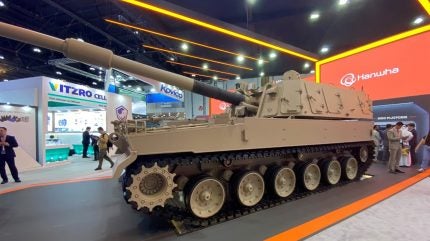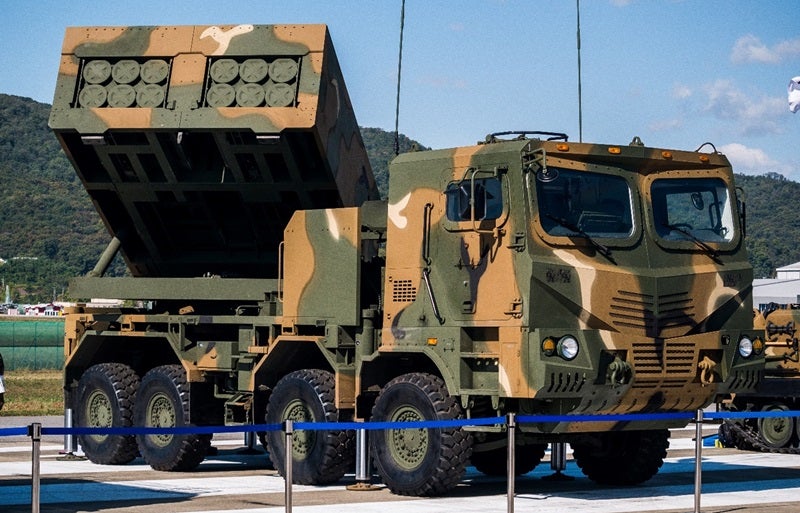Rejection to renewal: Hanwha seek to fill gaps in UK and Europe

The leading defence exhibition in the UK – DSEI – will commence next week and the gathering will present an opportunity for Hanwha Aerospace UK to make a comeback in the nation’s defence market after the Ministry of Defence (MoD) selected Germany’s Remote Controlled Howitzer 155 over its K9 Thunder last year.
Simon Humphrey, vice president for strategy and business development, laid out Hanwha’s objectives as the company look to supply and, crucially, partner with the UK government.

Discover B2B Marketing That Performs
Combine business intelligence and editorial excellence to reach engaged professionals across 36 leading media platforms.
Find out more
“The way we are approaching our European campaign and the campaign in the UK is to be [adding] to existing defence ecosystems,” he said in a media briefing on 4 September 2025 while pondering:
“Where are the gaps? What do we [Hanwha] have quickly available off the shelf that we could bring to that requirement?”
British Army transition
In May, the minister for defence procurement and industry, Maria Eagle, published decommissioning dates for armoured fighting vehicles in a parliamentary written statement.
Humphrey considered Warrior’s out of service date, and whether Hanwha’s Redback IFV, which he assured is a mature capability, with Australia waiting on 129 units to arrive from 2027, could be something that would fit that requirement.
In addition, these legacy AFVs only scratch the surface of decommissioning British Army platforms. There are thousands more light and medium utility vehicles due to be replaced through the Land Mobility Programme (LMP), for which invitations to tender are expected to be issued in November 2025.
But Humphrey echoed Hanwha’s stance that they are looking to add to existing infrastructure to fill the gaps. To this end, Humphrey continued, “we’ve spent some time looking at [LMP], but it doesn’t naturally play to [the] areas where we are strongest.
“There are others existing in the marketplace who are well placed to service that need… We’re not at the moment aggressively following it, and we’ll watch it with interest.”
Gaps in Europe
The Russia-Ukraine conflict demonstrates the prevalence of conventional artillery. According to data from the leading intelligence consultancy, GlobalData, Europe is projected to dominate the sector with a 43% share of the global artillery system market, currently valued at $11.3bn this year.
In this backdrop, Hanwha is eager to expand its tracked K9 self-propelled howitzer. Currently, the K9 User Club consists of five Nato member countries among seven customers. “If you go up to… Norway, Finland who are operating K9, their experience of bringing that into service [and] ongoing support from Hanwha in service is wholly positive,” Humphrey insisted.
Next week, at DSEI, Hanwha will present a scale model of the K9 A1 and A2 but also, for the first time, a wheeled 52 calibre artillery gun that is currently in development. This wheeled variant comes after the UK selected RCH, which sits atop a wheeled Boxer IFV.
Another coveted capability in Europe is the ability to inflict a deep strike effect. Long considered an escalatory move that would provoke the Russian leader Vladimir Putin, the United States refrained from handing Ukraine long-range weapons systems. Ukrainian industry have resorted to building their own: in the last several weeks there have widespread reports about the FP-5 Flamingo cruise missile.
Similarly, Hanwha seek to fill this gap in European arsenals with the K239 Chunmoo rocket artillery system, now rebranded ‘Deep Strike’, added Humphrey. Furthermore, Hanwha are looking to extend the range of this weapon system, currently between 80 to 150 kilometres (km), to 500km.

Energetics in the UK
In the last 50 days, the UK confirmed it has sent 60,000 artillery shells, rockets, and missiles to Ukraine’s Armed Forces. But as Ukraine has demonstrated, a reliable supply of munitions is needed to sustain conflict.
Hanwha seek to localise manufacturing processes with its customers in this area. Humphrey revealed that despite the British Army’s K9 rejection, the company are looking to produce energetics (reactive materials such as explosives, propellants, pyrotechnics) in the UK.
When asked about prospective British manufacturing sites, Humphrey said that Hanwha had entered into early stage discussions with the Department of Business and Trade, floating the idea of using old MoD sites for production.
“Until the UK MoD is able to give clarity to suppliers or potential suppliers about demand then it’s very difficult as a business to be writing a business case. That’s one of the things that is holding us and others back at the moment,” he concluded.
DSEI 2025 will take place at the London Excel between 9-12 September. You can find out more information about the exhibition here.


